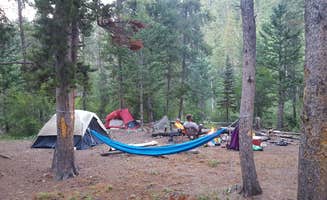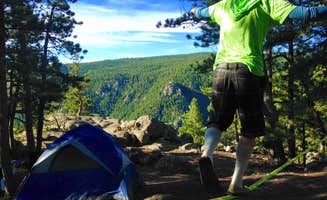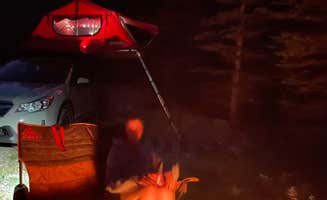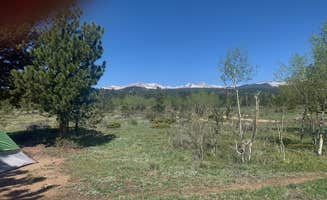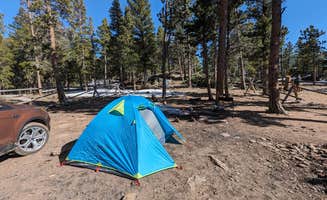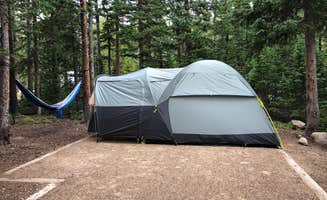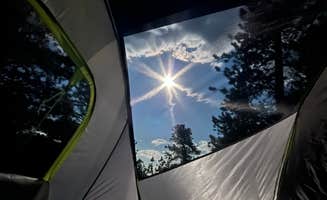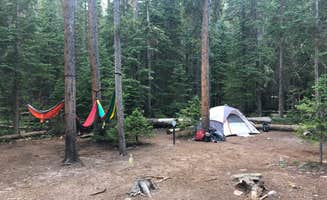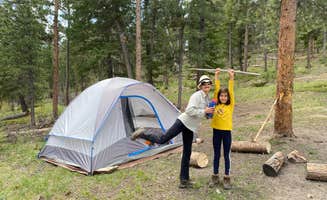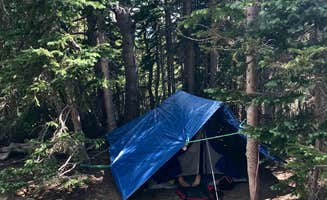Dispersed camping options surround Jamestown at elevations between 8,000-10,000 feet, offering primitive sites within Roosevelt National Forest that require no reservations. Summer temperatures typically range from 75°F daytime to 45°F at night, with afternoon thunderstorms common from July through August. Sites at higher elevations experience significant temperature drops after sunset with frost possible even in summer.
What to do
Mountain biking trails: Several dispersed camping areas provide direct access to forest service trails. At Allenspark Dispersed Camping, campers can find spots with creek access and trail connections. One visitor noted, "Drove out to this spot off Ski Road in Allenspark. Most spots sit on a creek that gives a good ambiance. Few spots need 4x4 or really good tires, but there's a spot for everyone."
Fly fishing access: Boulder Creek and its tributaries offer trout fishing within walking distance of many dispersed sites. At Dream Canyon Campsites, campers have easy access to fishing spots. One visitor reported, "This is also a huge spot for recreation like climbing and fishing, so almost everyone we saw were there just for the afternoon and we had the dispersed camping areas almost all to ourself."
Wildlife viewing: Early mornings provide opportunities for moose, elk and bear sightings. A camper at Allenspark Dispersed Camp Spot shared an unexpected encounter: "The second day staying there we ran into a bear and scared him off. Two hours later he can back and we scared him off again. He's afraid of humans but he did try to get into the car while we were sleeping."
What campers like
Solitude at higher elevations: Less crowded sites can be found by driving farther on forest service roads. At N Boulder Creek Dispersed Camping, visitors appreciate the remoteness: "Very seclude, easy to access. I saw about 10 different pull in sites, maybe more. Never found a creek or water but there are some cute cows nearby! Wildflowers we're crazy 7/3/23."
Creek-side sites: Many dispersed camping areas feature sites directly adjacent to creeks, providing both water access and natural white noise. As one camper at Allenspark noted: "A lot of good spots to pull off and relax for the night with a nearby stream, however if you have a car like myself I'd recommend the first couple spots as the road got pretty uneven and hilly shortly down the road."
Natural separation between sites: At dispersed areas, campsites typically have more distance between neighbors than developed campgrounds. A visitor to Allenspark Dispersed Camping observed, "The sites are very spread out and there weren't many people there, despite it being a weekend in June when I visited."
What you should know
Road conditions vary seasonally: Many dispersed sites require high-clearance vehicles, especially after rain. A camper at Gordon Gulch Dispersed Area advised, "Recommend a 4-wheel drive vehicle to reach some of the spots, especially if there is poor weather."
Pack everything out: No trash services exist at dispersed sites, and rangers regularly patrol popular areas. A visitor to Gordon Gulch noted, "I saw complaints on here about trash around the campsites, but they were clean. Very little trash, even when exploring around the campsites and into the wooded areas."
Variable noise levels: Some dispersed camping areas experience noise from recreational vehicles or nearby activities. A camper at Gordon Gulch reported, "The only disappointing thing was right before dusk was about an hour of shooting, constant and annoying. After dark, very quiet even though it was close to the road."
Wildlife precautions: Bear activity is common throughout the area, requiring proper food storage. At Dream Canyon, a camper warned, "Basic primitive dispersed camping. Just watch your food or the Huskies might get it if you're not paying attention."
Tips for camping with families
Developed campgrounds for amenities: Families often prefer sites with toilets and drinking water. Brainard Lake Recreation Area offers established facilities with more comfort. A visitor mentioned, "The campground is clean, spacious, and there are beautiful trails to ride your bikes, fly kites, read, hike, fish. Some campsites are a little close, but if you pick a good spot you have great seclusion."
Accessibility considerations: Not all dispersed camping areas are suitable for families with young children. At Allenspark Dispersed Camping, a visitor observed, "Hard to find, no signs. You will get back up in there and will come to a Fork one road appears to go downward to the left, the other goes up. Stay to the left."
First-time dispersed camping: For families new to primitive camping, choose sites closer to the main roads. An Allenspark camper shared, "This was our first time dispersed camping and we loved it! The road was pretty mild but on up gets a lot more rough! The pull offs are great and most of them have fire rings."
Tips from RVers
Size limitations: Most dispersed sites accommodate small trailers or campervans only. A visitor to Winiger Ridge at Gross Reservoir warned, "Camp sites are nice, but except for a few (~5) the rest require a serious climb (drive) up a gnarly hill with deep ruts. I wouldn't try this with a camper/RV, or anything that doesn't have high clearance and power."
Generator restrictions: Many areas prohibit generator use to preserve natural quiet. At Allenspark, a camper noted the natural alternatives: "Right next to a creek, nice to have a water feature" - providing natural white noise instead of mechanical sounds.
Limited turnaround space: Forest roads often lack adequate space for larger vehicles to turn around. A visitor to Winiger Ridge observed, "Dirt road for the last mile or so but it's in great condition" - but recommended scouting ahead before committing to narrower roads with an RV.


